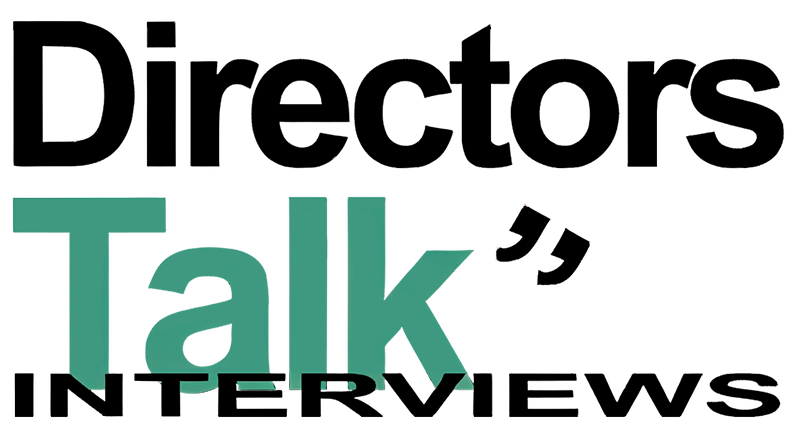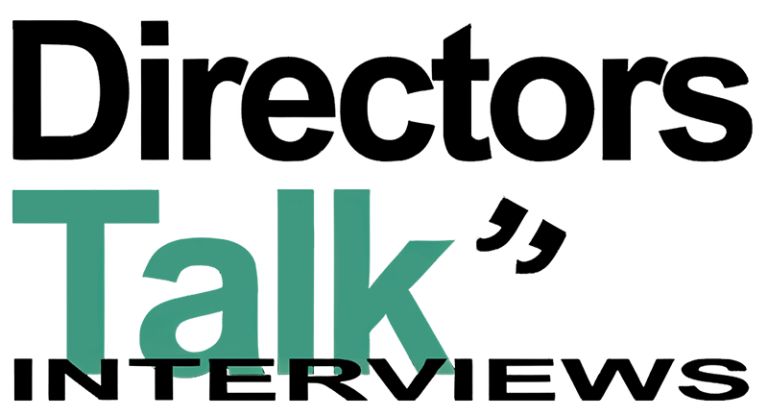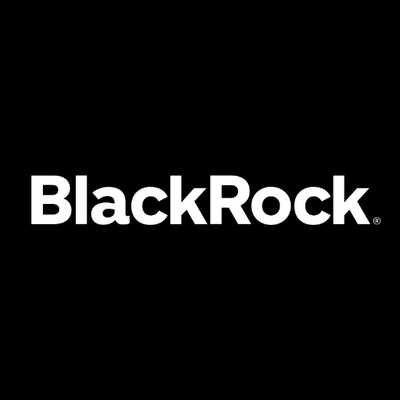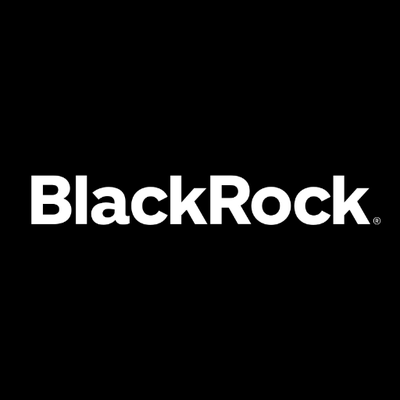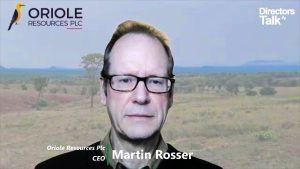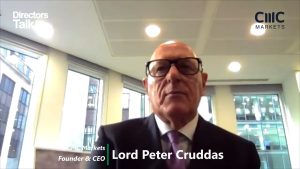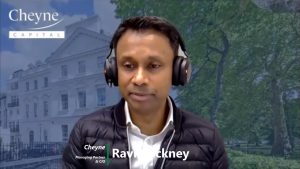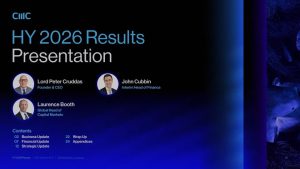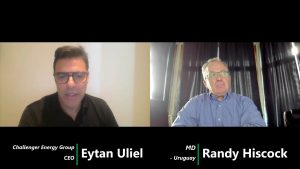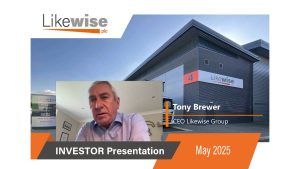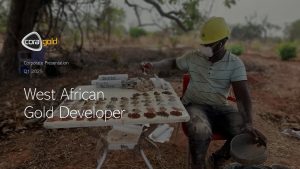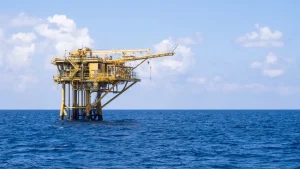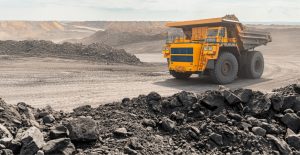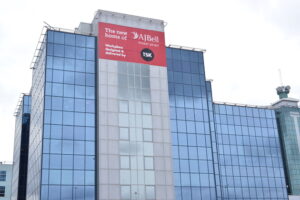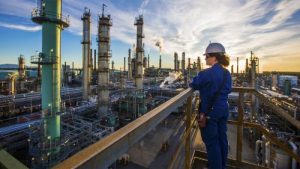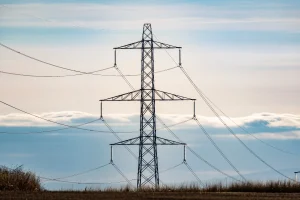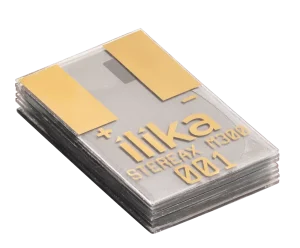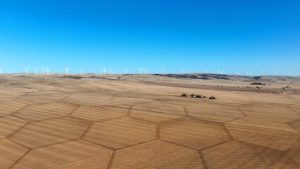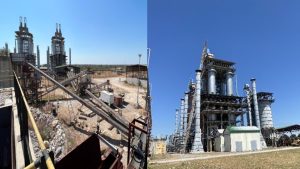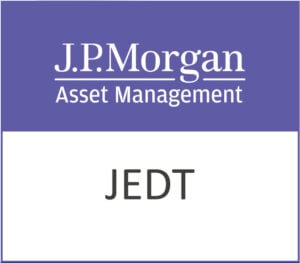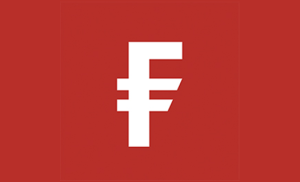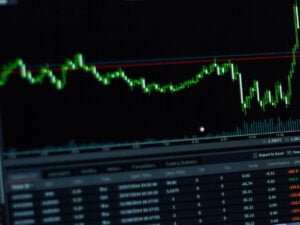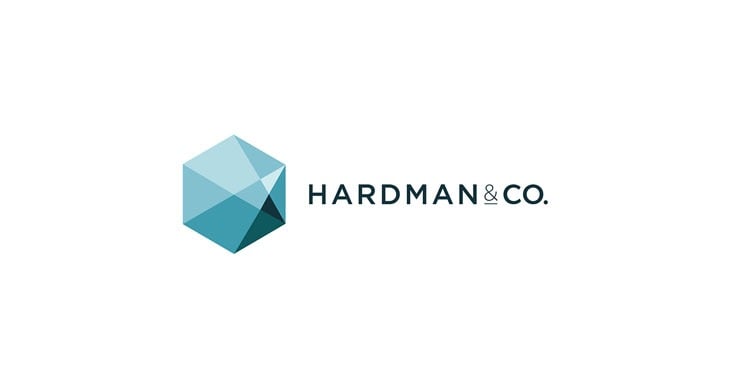BlackRock Latin American Investment Trust plc (LON:BRLA) has announced its Annual Results for the year ended 31 December 2022.
PERFORMANCE RECORD
| As at 31 December 2022 | As at 31 December 2021 | |
| Net assets (US$’000)1 | 148,111 | 194,838 |
| Net asset value per ordinary share (US$ cents) | 502.95 | 496.28 |
| Ordinary share price (mid-market) (US$ cents)2 | 457.10 | 461.19 |
| Ordinary share price (mid-market) (pence) | 380.00 | 340.50 |
| Discount3 | 9.1% | 7.1% |
| Performance (with dividends reinvested) | ||
| Net asset value per share (US$ cents)3 | 6.6% | –12.5% |
| Ordinary share price (mid-market) (US$ cents)2,3 | 4.7% | –11.8% |
| Ordinary share price (mid-market) (pence)3 | 18.0% | –11.0% |
| MSCI EM Latin America Index (net return, on a US Dollar basis)4 | 8.9% | -8.1% |
| For the year ended 31 December 2022 | For the year ended 31 December 2021 | Change % | |
| Revenue | |||
| Net profit after taxation (US$’000) | 13,842 | 10,247 | +35.1 |
| Revenue profit per ordinary share (US$ cents) | 41.48 | 26.10 | +58.9 |
| Dividends per ordinary share (US$ cents) | |||
| Quarter to 31 March | 7.76 | 6.97 | +11.3 |
| Quarter to 30 June | 5.74 | 7.82 | –26.6 |
| Quarter to 30 September | 6.08 | 6.56 | –7.3 |
| Quarter to 31 December | 6.29 | 6.21 | +1.3 |
| Special dividend5 | 13.00 | – | n/a |
| Total dividends paid and payable (US$ cents) | 38.87 | 27.56 | +41.0 |
1 The change in net assets reflects the portfolio movements during the year, the tender offer in the year and dividends paid.
2 Based on an exchange rate of US$1.20 to £1 at 31 December 2022 and US$1.35 to £1 at 31 December 2021.
3 Alternative Performance Measures, see Glossary contained within the annual report and financial statements.
4 The Company’s performance benchmark (the MSCI EM Latin America Index) may be calculated on either a gross or a net return basis. Net return (NR) indices calculate the reinvestment of dividends net of withholding taxes using the tax rates applicable to non-resident institutional investors, and hence give a lower total return than indices where calculations are on a gross basis (which assumes that no withholding tax is suffered). As the Company is subject to withholding tax rates for the majority of countries in which it invests, the NR basis is felt to be the most accurate, appropriate, consistent and fair comparison for the Company.
5 During the year, revenue earned by the Company was enhanced by a number of stock and special dividends, coupled with the effect of the tender offer reducing the number of ordinary shares in issue post May 2022. In order to maintain investment trust status, which requires the distribution of 85% of the Company’s revenue, the Board announced the payment of an additional dividend of 13.00 cents per ordinary share for the financial year to 31 December 2022.
Sources: BlackRock Investment Management (UK) Limited and Datastream.
Performance figures are calculated in US Dollar terms with dividends reinvested.
To learn more about the BlackRock Latin American Investment Trust plc please follow this link: blackrock.com/uk/brla
CHAIRMAN’S STATEMENT
Dear Shareholder
I am pleased to present the Annual Report to shareholders for the year ended 31 December 2022.
MARKET OVERVIEW
Latin American equity markets were the only region in the world to deliver positive returns in 2022. As such, they outperformed both developed markets and the MSCI Emerging Markets Indices, which were all negative for the year under review, with the MSCI EM Latin America Index up by 8.9% in US Dollar terms, compared to a fall in the MSCI Emerging Markets EMEA Index of 28.3% in US Dollar terms and a decline in the MSCI World Index of 18.1% in US Dollar terms. It was a challenging year for global equity markets due to the difficult global macro-economic and geo-political backdrop caused by Russia’s invasion of Ukraine impacting global markets. In spite of this the Board was pleased to see our region showed its defensiveness through its prudent monetary and fiscal policy and market recognition of its role as a primary crucial raw material producer to the world.
PERFORMANCE
Against this backdrop, over the year ended 31 December 2022 the Company’s net asset value per share rose by 6.6% over the year in US Dollar terms (lagging the benchmark by 2.3 percentage points). The share price rose by 4.7% in US Dollar terms (but increased by 18.0% in Sterling terms). The underperformance against the benchmark was largely driven by stock selection in Brazil, as tighter global liquidity and a reduced risk appetite drove valuations down for a number of what your portfolio managers believe to be quality, domestic growth stocks. Another factor impacting the stock performance of these quality, domestic growth equities include the steep hiking of local interest rates in Brazil. As a result, the domestic Brazilian equity market saw a great deal of redemptions from local investment funds forcing prices down in a somewhat indiscriminate manner. We believe this has created a degree of disconnect between underlying bottom-up fundamentals of Brazilian equities and stock market valuations.
Additional information on the main contributors to and detractors from performance for the period under review is given in the Investment Manager’s Report below.
GEARING
The Board’s view is that 105% of NAV is the neutral level of gearing over the longer term and that gearing should be used actively in an approximate range of plus or minus 10% around this as measured at the time that gearing is instigated. The Board is pleased to note that despite the high level of uncertainty over the year that the Managers have been bold and used gearing actively with a low of 105.5% in November 2022 and a high at 111.5% in March 2022. Average gearing for the year to 31 December 2022 was 108.7%.
REVENUE RETURN AND DIVIDENDS
Total revenue return for the year was 41.48 cents per share (2021: 26.10 cents per share). The increase of 59% was partially due to the increase of special dividends received in 2022 from the portfolio companies’ revenue streams. Under the Company’s dividend policy dividends are calculated and paid quarterly, based on 1.25% of the US Dollar NAV at close of business on the last working day of March, June, September and December respectively. An additional special dividend of 13.00 cents per ordinary share for the financial year to 31 December 2022 was declared alongside the fourth quarterly dividend. The revenue earned by the Company was enhanced by a number of stock and special dividends, coupled with the effect of the tender offer reducing the number of shares in issue post May 2022. It was necessary to pay the special dividend to maintain investment trust status which requires the distribution of 85% of the Company’s revenue.
Information in respect of the payment timetable is set out in the annual report and financial statements. Dividends will be financed through a combination of available net income in each financial year and revenue and capital reserves. The Company has declared interim dividends totalling 38.87 cents per share in respect of the year ended 31 December 2022 (2021: 27.56 cents per share) as detailed in the table below; this represented a yield of 8.5% based on the Company’s share price at 31 December 2022.
The dividends paid and declared by the Company in 2022 have been funded from current year revenue and brought forward revenue reserves. As at 31 December 2022, a balance of US$8,706,000 million remained in revenue reserves, which is sufficient to cover approximately four and a half quarterly dividend payments at the most recently declared dividend rate of 6.29 cents per share (excluding the additional special dividend of 13.00 cents per share).
Dividends will be funded out of capital reserves to the extent that current year revenue and revenue reserves are insufficient. The Board believes that this removes pressure from the investment managers to seek a higher income yield from the underlying portfolio itself which could detract from total returns. The Board also believes the Company’s dividend policy will enhance demand for the Company’s shares and help to narrow the Company’s discount, whilst maintaining the portfolio’s ability to generate attractive total returns. It is promising to note that since the dividend policy was introduced in 2018, the Company’s discount has narrowed from 14.9% as at 1 July 2018 to 9.1% as at 31 December 2022.
Dividends declared in respect of the year ended 31 December 2022
| Dividend | Pay date | |
| Quarter to 31 March 2022 | 7.76 cents | 16 May 2022 |
| Quarter to 30 June 2022 | 5.74 cents | 12 August 2022 |
| Quarter to 30 September 2022 | 6.08 cents | 9 November 2022 |
| Quarter to 31 December 20221 | 19.29 cents | 8 February 2023 |
| Total | 38.87 cents |
1 Quarter to 31 December 2022 includes an additional special dividend of 13.00 cents.
ESG AND SOCIALLY RESPONSIBLE INVESTMENT
As a Board we believe that good Environmental, Social and Governance (ESG) behaviour by the companies we invest in is important to the long-term financial success of our Company and are very encouraged that ESG issues are also increasingly at the forefront of investors’ minds. The Latin American economies are large producers to the world of vital food, timber, minerals and oil. These are all areas that are at the forefront of modern concerns about climate change, biodiversity and proportionate and sustainable use of land and ocean resources. The Board is aware that there is significant room for improvement in terms of disclosure and adherence to global best practices for many corporates throughout the Emerging Markets2 area and the Latin American region is no exception to this. The Board is also aware that as a whole the region lags global peers when it comes to ESG best practices.
The Board receives regular reporting from the Portfolio Managers on ESG matters and extensive analysis of our portfolio’s ESG footprint and actively engages with the Portfolio Managers to discuss when significant engagement may be required with the management teams of our Company’s portfolio holdings. The Portfolio Managers are supported by the extensive ESG resources within BlackRock and devote a considerable amount of time to understanding the ESG risks and opportunities facing companies and industries in the portfolio. While the Company has not adopted an ESG investment strategy or exclusionary screens, consideration of ESG analytics, data and insights is integrated into the investment process when weighing up the risk and reward benefits of investment decisions. More information in relation to BlackRock’s approach to ESG integration can be found below.
The Board believes that communication and engagement with portfolio companies can lead to better outcomes for shareholders and the environment than merely excluding investment in certain areas. It is encouraged by the progress made through BlackRock’s company engagement to encourage sound corporate governance frameworks that promote strong leadership by boards of directors and good management practices contributing to a better outcome for all stakeholders. More information in respect of our approach to ESG can be found within the annual report and financial statements.
2 Emerging Markets in this respect represented by the MSCI Emerging Markets Index.
PERFORMANCE TRIGGERED TENDER OFFER
Your Company’s Directors have always recognised that our role is to act in the best interests of all our shareholders. We have regularly consulted with our major shareholders to understand their objectives and used their input to guide our strategy and policies. We note their desire for the Company to continue with its existing investment policy and the overwhelming shareholder support for the vote on the continuation of the Company at the AGM in May 2022. We also recognise that it is in the long-term interests of shareholders that shares do not trade at a significant discount to their prevailing NAV and to this end, the Board put in place a discount control mechanism covering the four years to 31 December 2021 to offer a tender for up to 24.99% of shares in issue to the extent that certain performance and average discount targets over the four year period to 31 December 2021 were not met (more detail on the performance and discount targets and the tender mechanism for the period to 31 December 2021 can be found in the Company’s Annual Report for the year to 31 December 2021 on pages 7 and 8). This resulted in a tender offer for 24.99% of the Company’s shares being put to shareholders for approval at a General Meeting held on 19 May 2022 and subsequently implemented as summarised below.
A total of 22,844,851 shares were validly tendered under the tender offer, representing approximately 58.2% of the Company’s issued share capital, excluding shares held in treasury. As the offer was oversubscribed, it was scaled back and eligible shareholders who validly tendered shares in excess of their basic entitlement of 24.99% had their basic entitlement satisfied in full plus approximately 19.71% of the excess amount they tendered, in accordance with the process described in the tender circular published on 5 April 2022. In total, 9,810,979 shares (representing 24.99% of the eligible share capital) were repurchased by the Company and subsequently cancelled.
The price at which tendered shares were repurchased was equal to 98% of the Net Asset Value per share as at a calculation date of 20 May 2022, as adjusted for the estimated related portfolio realisation costs per tendered share, and amounted to 417.09 pence per share. Tender proceeds were paid to shareholders on 26 May 2022.
DISCOUNT MANAGEMENT AND NEW DISCOUNT CONTROL MECHANISM
The Board remains committed to taking appropriate action to ensure that the Company’s shares do not trade at a significant discount to their prevailing NAV and have sought to reduce discount volatility by offering shareholders a new discount control mechanism covering the four years to 31 December 2025. This mechanism will offer shareholders a tender for 24.99% of the shares in issue excluding treasury shares (at a tender price reflecting the latest cum-income NAV less 2% and related portfolio realisation costs) in the event that the continuation vote to be put to the Company’s AGM in 2026 is approved, where either of the following conditions have been met:
(i) the annualised total NAV return of the Company does not exceed the annualised benchmark index (being the MSCI EM Latin America Index) US Dollar (net return) by more than 50 basis points over the four year period from 1 January 2022 to 31 December 2025 (the Calculation Period); or
(ii) the average daily discount to the cum-income NAV exceeds 12% as calculated with reference to the trading of the shares over the Calculation Period.
In respect of the above conditions, the Company’s total NAV return on a US Dollar basis for the year ended 31 December 2022 was +6.6%, underperforming the benchmark return of +8.9% over the year by 2.3 percentage points. The cum-income discount of the Company’s ordinary shares has averaged 8.9% for the year ending 31 December 2022.
Other than the shares repurchased under the tender offer implemented in May 2022, the Company has not bought back any shares during the year ended 31 December 2022 and up to the date of publication of this report (no shares were bought back in the year to 31 December 2021).
CHANGE IN PORTFOLIO MANAGER
As announced on 9 September 2022, Sam Vecht, who has co-managed the portfolio alongside Ed Kuczma since December 2018, became the lead portfolio manager of the Company with Mr Kuczma stepping down from his role. Christoph Brinkmann has been appointed as deputy portfolio manager. Mr Vecht is a Managing Director in BlackRock’s Global Emerging Markets Equities team and has extensive Latin American experience in the investment trust sector, having managed a number of UK investment trusts since 2004. He has also been portfolio manager for the BlackRock Emerging Markets Equity Strategies Fund since September 2015, and the BlackRock Frontiers Investment Trust plc since 2010, both of which have invested in the Latin American region since launch.
Mr Brinkmann, a Vice President in the Global Emerging Markets Equities team, has covered multiple sectors and countries across the Latin American region. He joined BlackRock in 2015 after graduating from the University of Cologne with a Masters in Finance and a CEMS Masters in International Management.
Mr Vecht and Mr Brinkmann are supported by the extensive resources and significant expertise of BlackRock’s Global Emerging Market team which has a proven track record in emerging market equities. The team is made up of c.40 investment professionals researching over 1,000 companies across the global emerging markets universe inclusive of Latin America. Your Board notes that Mr Vecht’s new role as lead portfolio manager provides continuity for the Company and welcomes the addition of Mr Brinkmann to the team as deputy portfolio manager. The Board are grateful to Mr Kuczma for his commitment and contribution to the Company and wish him well in his future endeavours.
BOARD COMPOSITION
As previously advised in last year’s Annual Report, Professor Doctor has indicated that she will not seek re-election at the 2023 AGM. The Board wishes to thank Professor Doctor for her many years of excellent service, we wish her the best for the future.
ANNUAL GENERAL MEETING
The Company’s Annual General Meeting will be held in person at the offices of BlackRock at 12 Throgmorton Avenue, London EC2N 2DL on Monday, 22 May 2023 at 12.00 noon. Details of the business of the meeting are set out in the Notice of Annual General Meeting contained within the annual report and financial statements.
The Board very much looks forward to meeting shareholders and answering any question you may have on the day. We hope you can attend this year’s AGM; a buffet lunch will be made available to shareholders who have attended the AGM.
OUTLOOK
The end of years of government and central banks creating ultra low interest rates, heavily intervening in the bond markets and creating excess money was never likely to be smooth. Sharp adjustments in specific areas are starting to emerge such as UK pensions Liability Driven Investing (LDI) problems in September 2022 and the collapse of US banks such as SVB in March 2023. It would be unduly optimistic not to expect more problems to suddenly emerge. Despite the fact that central banks in Latin America have not pursued these monetary policies, Latin America could remain vulnerable to getting caught in a fallout of repricing of risk globally. However, we believe once this adjustment is behind us the longer term fundamentals are much better in emerging markets than in developed markets, especially in Latin America. Central banks in the region have been ahead of the curve during this tightening cycle and most countries in the region are now offering some of the highest real interest rates in the world.
The region is rich in natural resources, including fossil fuels of crude oil and natural gas, creating favourable supply and demand dynamics. It is also a major source of copper and lithium, critical materials for the green energy revolution. With the removal of Russia from western supply chains, the importance of Latin America in these markets has increased. The post Covid-19 trend for companies to move away from off-shoring (especially in China) to near-shoring should also benefit the Latin American region and your Board believes Mexico will continue to be an even stronger global beneficiary of new marginal foreign direct investment flows.
Carolan Dobson
Chairman
29 March 2023
INVESTMENT MANAGER’S REPORT
MARKET OVERVIEW
Latin America performed well in 2022 and was the only region globally to end the year in positive territory, the MSCI EM Latin America Index gaining +8.9%. For reference the MSCI Emerging Markets Index was down –20.1% with MSCI Asia Pacific ex-Japan retracing –17.5% and the MSCI Emerging Markets EMEA Index losing –28.3%. The region also significantly outpaced the MSCI USA Index, down -19.8%, and Developed Market equities, as represented by the MSCI World Index, down -18.1%.
The first half of the year was turbulent driven by external macro conditions. Latin America1 surged +27.3% in the first quarter as the commodity rich region benefitted from a spike in prices caused by Russia’s invasion of Ukraine as capacity was taken offline and supply chains were materially disrupted. The resulting improvements in the current account, due to higher exports, paired with already attractive interest rates benefitted both currency and bond markets.
Whilst domestically, politics dominated the headlines with legislative and primaries elections in Colombia, impeachment rejection in Peru and a new constitution moving forward in Chile, it was not enough to derail stronger macro factors. However, the region retracted –21.9%1 in the second quarter as equities priced in falling commodity demand and growing fears of a global recession. The pessimism was also felt in the currencies, as the Chilean Peso, Brazilian Real and Colombian Peso were some of the worst performers across emerging markets.
The second half of the year saw slightly less volatile returns for the region, with all markets except for Colombia gaining in the last six months of the year. Brazil fared well into October as inflation showed signs of peaking with investors anticipating an easing of monetary policy. However, the presidential election and subsequent uncertainty surrounding Lula’s cabinet and future fiscal policy put pressure on the market into the year-end. Colombia and Chile also remained affected by politics. Whilst generally viewed as a more positive outcome, the latter market still pulled back following a rejection in the September 4th referendum of a new constitution. Argentina was a standout performer in second half of the year, supported by newly appointed Finance Minister Massa signalling that the country would not seek to alter the goals already set with the IMF.
Argentina was the top performing market in the region for the 12 months ending 31 December 2022, gaining +35.9%, Chile +19.4%, Brazil +14.2% and Peru +9.4% ended in positive territory, whilst Mexico fell –2.0% and Colombia –6.0% lagged but still did considerably better than almost all developed and emerging markets outside the region1.
1 Source: Bloomberg. As at 31 December 2022. All performance figures are the local MSCI indices in USD terms on a net basis.
PERFORMANCE REVIEW AND POSITIONING
The Company underperformed its benchmark over the 12 month period ended 31 December 2022, returning +6.6% in NAV terms. Over the same time horizon, the Company’s benchmark, the MSCI Latin America Index, returned +8.9% on net basis in US Dollar terms.
Stock selection in Mexico and having very limited exposure to Colombia throughout the year contributed to relative returns. Brazil and Chile were the largest detractors on a relative basis due to stock positioning. At the sector level, Consumer Staples and Real Estate exposure performed well, whilst Health Care, Materials and IT weighed on returns.
Overweight positions in Brazilian financials such as stock exchange, B3, and insurer, BB Seguridade, were amongst the period’s top performers as inflation in Brazil appeared to be peaking, and investors began to anticipate an inflection in interest rates. Staples exposure across the region also contributed to relative returns, adding resiliency to the portfolio throughout the year. Mexican beverage name, FEMSA, was amongst the largest contributors, supported by their Oxxo convenience store chain showing strong earnings and revenue growth in their same-store sales. Brazilian cash and carry outlet, Assai, also performed well and is a great example of cheap, quality earnings growth from a management team that has delivered. Elsewhere, off-benchmark exposure to Mexican real estate company, Corporacion Inmobiliaria Vesta, helped the Company, supported by attractive demand dynamics for industrial warehousing on the back of near-shoring of supply chains benefitting Mexican property developers. Grupo Financiero Banorte, our preferred financials exposure in Mexico, did well throughout the period, and the stock was further supported in the fourth quarter by an announcement that they will no longer be bidding for Citi’s Banamex unit, which should pave the way for higher dividends. Also in the latter half of the year, travel-related names such as Mexican airport operator, Grupo Aeroportuario del Pacifico, and regional, low-cost carrier, Copa Holdings, contributed to performance as tourism and business travel rebounded.
An off-benchmark position in Argentine IT and software developer, Globant, weighed heavily on returns as global markets rotated away from growth stocks. An overweight in Mexican cement company, Cemex, also hurt returns as profitability was temporarily hit by rising energy costs due to the lagging nature of cement price increases. In Brazil, health care service provider, Hapvida Participações, was the period’s largest detractor, as the company continues to face a tough operating environment due to high medical usage and continued cost pressures. In addition, the merger with Intermedica is proving more complex than anticipated. Adding exposure to XP in the back end of the year weighed on performance due in part to weaker domestic sentiment related to the fiscal policy uncertainty in the fourth quarter. Expectations of higher rates remaining for a longer period, has resulted in continued retail preference for fixed income over equities, putting pressure on asset managers like XP, given lower fees associated with those products. On the commodity side, a persistent underweight to Chilean miner, SQM, was a drag on returns as lithium prices remained elevated for much of the year, and an underweight to Vale also detracted as the stock remained resilient despite weaker volumes outlook.
During the period we added significantly to Brazil, and trimmed positions in Mexico, whilst remaining overweight. We added to Brazilian brewing company, AmBev, as we believe the stock is trading at attractive valuations while the company focuses on premiumization, innovation and diversification to bring new consumers on board and strengthen its brands. Despite underperformance we added to our position in health care insurer, Hapvida Participações, where the market seems too focused on the short-term environment for the sector and is forgetting about the much brighter outlook for the name in 2023 and 2024 as medical loss ratios should trend down and merger synergies will come through. We have added to higher conviction consumer-related ideas, such as supermarket chain, Assai, and clothing retailer, Arezzo Industria e Comercio SA after the team visited stores and spoke to multiple competitors while travelling to Brazil in November. In our view, domestic cyclicals continue to look attractive in light of the anticipated decline in interest rates over the next 12-18 months.
On the other hand, we sold our position in Brazilian food processing company, Marfrig, as we see signs of the cattle cycle turning for next few years leading to downside in margin expectations. In Mexico we reduced exposure to telecommunications company, América Movil, following strong relative performance on the back of deleveraging efforts. We also reduced exposure to Walmex, given a preference for FEMSA in the staples space, particularly given a strong operating environment for its core convenience store business Oxxo. Elsewhere, we exited Chilean retail platform, Falabella, as we expect suboptimal returns following excessive investment. More broadly, we reduced the number of stocks in Brazil, selling names which ranked at the lower end of our conviction spectrum. Examples of stocks exiting the fund included Brazilian small-caps Santos (port operator) and Afya (online education), which had the added benefit of improving the liquidity profile of the portoflio.
The Company ended the period leveraged, given our highly positive outlook and was overweight Brazil and Mexico, while maintaining off-benchmark exposure to Argentina and Panama. We are underweight Colombia, Chile and Peru. At the sector level, we are overweight real estate and financials, while being most underweight materials and utilities.
OUTLOOK
We continue to believe that global interest rates need to rise from here and global liquidity will tighten somewhat as central banks fight to bring inflation down. While markets have adjusted somewhat in our view the risk of further downside risk to global markets is still there. We maintain this view even as several lead indicators of goods inflation look to have peaked out and are retracing. However, the larger issue in our view remains excess broad money creation in western markets which needs time to correct.
From this lens, Latin America could remain vulnerable to getting caught in a fall out of repricing of risk globally. However, we believe once this adjustment is behind us the longer term fundamentals are much better in emerging markets than in developed markets, especially in Latin America. Central banks in the region have been ahead of the curve during this tightening cycle and most countries in the region are now offering some of the highest real interest rates in the world. Chile is a standout case with rates now at some of the highest observed levels over the past 25 years. Similarly, rates in Colombia have not been this high since 2008. This is a very different backdrop to developed markets, where central banks are earlier in their tightening cycles and excess broad money creation has yet to be absorbed.
Brazil’s economy is holding up well despite high interest rates. Real rates, the difference between interest rates and inflation, are significantly positive in Brazil as the country is farthest along in the rate rising cycle, setting up a positive outlook for the equity market as rates peak. Historically when this has happened it has attracted foreign capital and led to a significant rally in risk asset prices. Despite continued uncertainty around future fiscal policy and a potential delay in the downward path of interest rates, we still expect interest rates to shift downwards from the current level of 13.75% over the next twelve months, which should lay the foundation for a meaningful cyclical pick-up.
We also like Mexico, based on the stable politics and solid economic trends, including a rising share of exports to the U.S.
Elsewhere, whilst we remain underweight, parts of the Chilean market have begun to pique our interest from a relative value lens as selling pressure across the market, led by pension reductions and diversification efforts from high-net-worth individuals, has led to decent assets trading at more attractive valuations.
Sam Vecht and Christoph Brinkmann
BlackRock Investment Management (UK) Limited
29 March 2023
TEN LARGEST INVESTMENTS
as at 31 December 2022
1 = Vale (2021: 1st)
Materials
Market value – American depositary share (ADS): US$15,084,000
Share of investments: 9.5% (2021: 7.6%)
is one of the world’s largest mining groups, with other business in logistics, energy and steelmaking. Vale is the world’s largest producer of iron ore and nickel but also operates in the coal, copper, manganese and ferro-alloys sectors.
2 = Petrobrás (2021: 2nd)
Energy
Market value – American depositary receipt (ADR): US$6,783,000
Market value – Preference shares ADR: US$4,384,000
Share of investments: 7.1% (2021: 7.5%)
is a Brazilian integrated oil and gas group, operating in the exploration and production, refining, marketing, transportation, petrochemicals, oil product distribution, natural gas, electricity, chemical-gas and biofuel segments of the industry. The group controls significant assets across Africa, North and South America, Europe and Asia, with a majority of production based in Brazil.
3 + FEMSA (2021: 15th)
Consumer Staples
Market value – ADR: US$9,513,000
Share of investments: 6.0% (2021: 2.5%)
is a Mexican beverages group which engages in the production, distribution and marketing of beverages. The firm also produces, markets, sells and distributes Coca-Cola trademark beverages, including sparkling beverages.
4 + AmBev (2021: 26th)
Consumer Staples
Market value – ADR: US$8,401,000
Share of investments: 5.3% (2021: 1.6%)
is a Brazilian brewing group which engages in the production, distribution and sale of beverages. Its products include beer, carbonated soft drinks and other non-alcoholic and non-carbonated products with operations in Brazil, Central America, the Caribbean (CAC) and Canada.
5 = B3 (2021: 5th)
Financials
Market value – Ordinary shares: US$8,295,000
Share of investments: 5.2% (2021: 4.6%)
is a stock exchange located in Brazil, providing trading services in an exchange and OTC environment. B3’s scope of activities include the creation and management of trading systems, clearing, settlement, deposit and registration for the main classes of securities, from equities and corporate fixed income securities to currency derivatives, structured transactions and interest rates, and agricultural commodities. B3 also acts as a central counterparty for most of the trades carried out in its markets and offers central depository and registration services.
6 – Banco Bradesco (2021: 4th)
Financials
Market value – ADR: US$8,086,000
Share of investments: 5.1% (2021: 5.3%)
is one of Brazil’s largest private sector banks. The bank divides its operations in to two main areas – banking services and insurance services, management of complementary private pension plans and savings bonds.
7 + Itaú Unibanco (2021: 21st)
Financials
Market value – ADR: US$7,701,000
Share of investments: 4.9% (2021: 1.9%)
is a Brazilian financial services group that services individual and corporate clients in Brazil and abroad. Itaú Unibanco was formed through the merger of Banco Itaú and Unibanco in 2008. It operates in the retail banking and wholesale banking segments.
8 – Grupo Financiero Banorte (2021: 7th)
Financials
Market value – Ordinary shares: US$7,574,000
Share of investments: 4.8% (2021: 4.5%)
is a Mexican banking and financial services holding company and is one of the largest financial groups in the country. It operates as a universal bank and provides a wide array of products and services through its broker dealer, annuities and insurance companies, retirements savings funds (Afore), mutual funds, leasing and factoring company and warehousing.
9 + Hapvida Participações (2021: n/a)
Health Care
Market value – Ordinary shares: US$4,442,000
Share of investments: 2.8% (2021: n/a)
is a Brazilian holding healthcare company, the company operates with a vertical service structure and is one of the largest healthcare solutions providers in the country. The company provides medical assistance and dental care plans, their operating structure includes facilities such as hospitals, walk-in emergencies, clinics, or diagnostic imaging units.
10 – Cemex (2021: 8th)
Materials
Market value – ADR: US$4,437,000
Share of investments: 2.8% (2021: 3.6%)
is a Mexican multinational building materials company and is one of the world’s largest global building materials companies. It manufactures and distributes cement, ready-mix concrete and aggregates in more than 50 countries.
All percentages reflect the value of the holding as a percentage of total investments. For this purpose, where more than one class of securities is held, these have been aggregated. The percentages in brackets represent the value of the holding as at 31 December 2021.
Together, the ten largest investments represent 53.5% of the total investments (ten largest investments as at 31 December 2021: 51.3%).
PORTFOLIO OF INVESTMENTS
as at 31 December 2022
| Market value US$’000 | % of investments | ||
| Brazil | |||
| Vale – ADS | 15,084 | 9.5 | |
| Petrobrás – ADR | 6,783 | } | 7.1 |
| Petrobrás – preference shares ADR | 4,384 | ||
| AmBev – ADR | 8,401 | 5.3 | |
| B3 | 8,295 | 5.2 | |
| Banco Bradesco – ADR | 8,086 | 5.1 | |
| Itaú Unibanco – ADR | 7,701 | 4.9 | |
| Hapvida Participações | 4,442 | 2.8 | |
| Sendas Distribuidora | 4,229 | 2.7 | |
| Suzano Papel e Celulose | 3,513 | 2.2 | |
| Gerdau – Preference Shares | 3,008 | 1.9 | |
| Arezzo Industria e Comercio SA | 2,973 | 1.9 | |
| Iguatemi | 2,796 | 1.8 | |
| XP | 2,751 | 1.7 | |
| Banco Bradesco – Preference Shares | 2,673 | 1.7 | |
| Rede D’or Sao Luiz | 2,111 | 1.3 | |
| IRB Brasil Resseguros | 1,894 | 1.2 | |
| Localiza Rent A Car | 1,698 | 1.1 | |
| Movida Participações | 1,608 | 1.0 | |
| Mrv Engenharia | 1,570 | 1.0 | |
| Rumo | 881 | 0.6 | |
| Localiza Rent A Car Rights | 1 | – | |
| 94,882 | 60.0 | ||
| Mexico | |||
| FEMSA – ADR | 9,513 | 6.0 | |
| Grupo Financiero Banorte | 7,574 | 4.8 | |
| Cemex – ADR | 4,437 | 2.8 | |
| Corporación Inmobiliaria Vesta | 3,824 | 2.4 | |
| Grupo Aeroportuario del Pacifico – ADS | 3,688 | 2.3 | |
| América Movil – ADR | 3,642 | 2.3 | |
| Fibra Uno Administracion – REIT | 3,601 | 2.3 | |
| Walmart de México y Centroamérica | 3,010 | 1.9 | |
| Grupo México | 2,759 | 1.7 | |
| Sitios Latinoamerica | 86 | 0.1 | |
| 42,134 | 26.6 | ||
| Chile | |||
| Empresas CMPC | 3,212 | 2.0 | |
| Banco Santander-Chile – ADR | 3,043 | 1.9 | |
| Cia Cervecerias Unidas – ADR | 1,385 | } | 1.7 |
| Cia Cervecerias Unidas | 1,237 | ||
| 8,877 | 5.6 | ||
| Argentina | |||
| Tenaris | 2,806 | 1.8 | |
| Globant | 2,258 | 1.4 | |
| 5,064 | 3.2 | ||
| Peru | |||
| Credicorp | 3,775 | 2.4 | |
| 3,775 | 2.4 | ||
| Panama | |||
| Copa Holdings | 3,417 | 2.2 | |
| 3,417 | 2.2 | ||
| Total investments | 158,149 | 100.0 |
All investments are in equity shares unless otherwise stated.
The total number of investments held at 31 December 2022 was 40 (31 December 2021: 40). At 31 December 2022, the Company did not hold any equity interests comprising more than 3% of any company’s share capital (31 December 2021: none).
PORTFOLIO ANALYSIS
as at 31 December 2022
Geographical Weighting (gross market exposure) vs MSCI EM Latin America Index
| % of net assets | MSCI EM Latin America Index | |
| Brazil | 64.0 | 62.1 |
| Mexico | 28.5 | 26.9 |
| Chile | 6.1 | 6.6 |
| Argentina | 3.4 | 0.0 |
| Peru | 2.5 | 3.1 |
| Panama | 2.3 | 0.0 |
| Colombia | 0.0 | 1.3 |
Sources: BlackRock and MSCI.
Sector and geographical allocations
| Brazil | Mexico | Chile | Argentina | Peru | Panama | Net other liabilities | 2022 Total | 2021 Total | |
| % | % | % | % | % | % | % | % | % | |
| Communication Services | – | 2.5 | – | – | – | – | – | 2.5 | 10.9 |
| Consumer Discretionary | 3.1 | 0.1 | – | – | – | – | – | 3.2 | 4.0 |
| Consumer Staples | 8.5 | 8.4 | 1.8 | – | – | – | – | 18.7 | 12.2 |
| Energy | 7.5 | – | – | 1.9 | – | – | – | 9.4 | 8.2 |
| Financials | 21.2 | 5.1 | 2.1 | – | 2.5 | – | – | 30.9 | 27.1 |
| Health Care | 4.4 | – | – | – | – | – | – | 4.4 | 5.7 |
| Industrials | 2.8 | 2.5 | – | – | – | 2.3 | – | 7.6 | 8.7 |
| Information Technology | – | – | – | 1.5 | – | – | – | 1.5 | 3.1 |
| Materials | 14.6 | 4.9 | 2.2 | – | – | – | – | 21.7 | 23.2 |
| Real Estate | 1.9 | 5.0 | – | – | – | – | – | 6.9 | 4.1 |
| Utilities | – | – | – | – | – | – | – | – | 1.7 |
| Net other liabilities | – | – | – | – | – | – | (6.8) | (6.8) | (8.9) |
| 2022 total investments | 64.0 | 28.5 | 6.1 | 3.4 | 2.5 | 2.3 | (6.8) | 100.0 | – |
| 2021 total investments | 60.1 | 33.5 | 6.1 | 3.1 | 3.8 | 2.3 | (8.9) | – | 100.0 |
Source: BlackRock.
To learn more about the BlackRock Latin American Investment Trust plc please follow this link: blackrock.com/uk/brla
